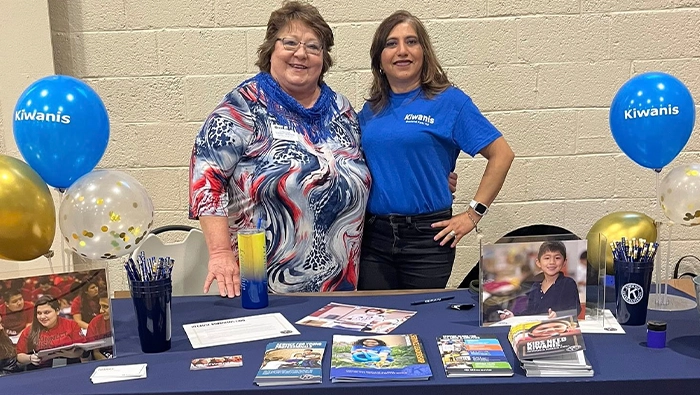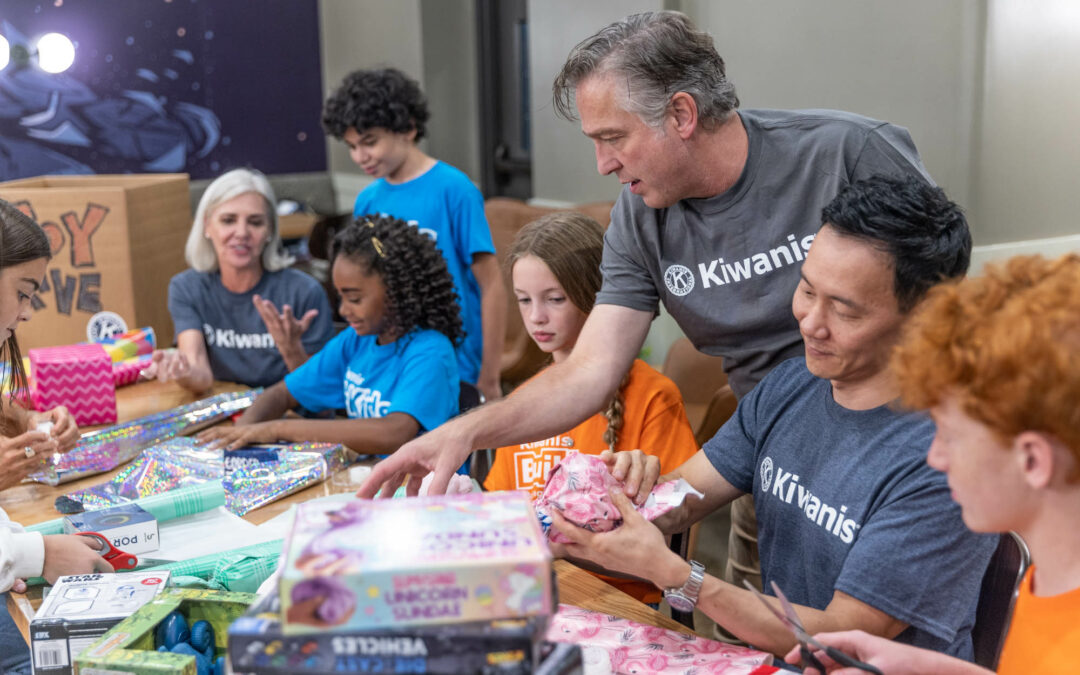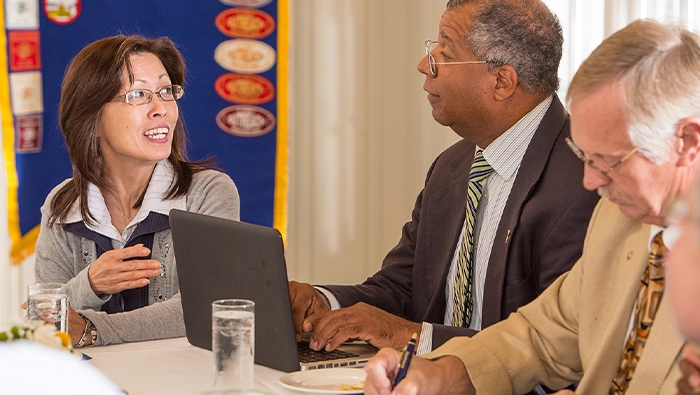
An induction ceremony for everyone
In Kansas, U.S., a Kiwanis club invited the whole town to watch it welcome new members.
By Tony Knoderer
For Kiwanis clubs that want to make new members feel welcome, one of the most important opportunities is the induction ceremony. It’s a chance to make the official start of membership feel like an event.
On May 3, the Kiwanis Club of Spring Hill, Kansas, U.S., inducted 22 members. But it also put a spin on tradition: It made the induction a public event, with activities for the whole community.
After all, the Spring Hill club itself is new, so every event can be a way of introducing the community to Kiwanis — and to the joy of joining. The result was a day of fun and celebration for people of all ages. For kids, one major feature was a free youth basketball clinic hosted by the head coach and members of the Spring Hill High School boys’ basketball team. The event also included a silent auction and a free lunch sponsored by a member-owned local business.
“What better way for us to introduce ourselves to the community than showing what we can do?” says Alex Dickerson, club member and treasurer. “It was really just a result of brainstorming: ‘Let’s not be stuffy. Let’s bring in people and do something that has to do with our goals.’”
Nearly 90 people attended throughout the day, she adds, from families to community leaders and local partners. The event also served a further purpose: recruiting.
“We had five additional individuals express interest,” Dickerson says.
10 tips for your club
The Kiwanis Club of Spring Hill is new to its community, but an induction ceremony that offers wider appeal makes sense for any club. Let’s look at 10 components of the Spring Hill club’s success:
- Think about the venue. To select the right location, you need to know your event. “We put some thought into the numbers,” Dickerson says. “We were targeting as many as 200 people.” That made the Spring Hill Civic Center ideal — especially with its gymnasium, which she calls “a huge benefit.”
- Be realistic. Basketball wasn’t the club’s first choice for the main children’s activity. “We wanted to do volleyball,” Dickerson says. “But we realized this was our first event — and we knew if there were a lot of kids, we needed it to be easier to organize the logistics.”
- Reflect your club’s vision. Another reason for basketball was a desire in the community for kids of all ages to have a chance to play the sport. “One thing we hear is that some kids want to play but get left without options,” Dickerson says. “Creating an equal opportunity for all kids — that’s part of our vision for the club.”
- Encourage public attendance at the ceremony. The club followed Kiwanis International’s structure for the presentation, but scheduled lunch to coincide with the ceremony. “Doing them at the same time was designed to draw people in so (community members) could hear from the members and Kiwanis leadership,” Dickerson says.
- Know what your community offers. Another benefit of the Civic Center: As a nonprofit organization, the club has free access to its event space three times per year. “One thing about working with our city — they’re supportive,” Dickerson says. “And it keeps costs low.”
- Know what your members offer. In Spring Hill, one club member is a graphic designer. That skill paid off with a high-quality flyer that the club used to promote the event online and throughout the community. (See below.) Another member, Libby Clark, is a local small-business owner whose insurance agency has built trust and connections locally. Lunch at the event was free, thanks to her sponsorship. Clark’s husband, Jason, is the club’s vice president — and owner of a company that made the event’s volunteer T-shirts as well as the Kiwanis-branded table covers.
- Invite Kiwanians from other clubs. Show people that Kiwanians are part of a larger network of volunteers who support each other. At the Spring Hill event, members of seven other clubs traveled to take part. So did Jan Maxwell, the Kansas District’s membership coordinator. “Jan even gifted us with our metal Kiwanis sign for the entrance to Spring Hill,” Dickerson says. In fact, she adds, Maxwell’s work was crucial in general — including surveying the community for its needs and recruiting many of the charter members.
- Seek out like-minded people and groups. Local leaders, businesspeople and volunteer organizations can provide material support (which can then lead eventually to interest in joining the club). When distributing its event flyer on online platforms like Facebook, the club sought out specific groups on the site. “We’ve received access to local pages — groups that might have a natural interest in what we do,” Dickerson says.
- Be creative with marketing. The members also took time to think of other opportunities, such as a club presence at school-district events. “We couldn’t necessarily get the flyer in every (school) kid’s backpack,” Dickerson says. “But we worked with the school system, and (the digital platform) Peach Jar distributes it to all parents districtwide.”
- Include fundraising. Any public event is an opportunity to raise money for local causes — and to show attendees another aspect of Kiwanis’ benefit to the community. During its event, the Spring Hill club raised over US$2,400 through a silent auction, donations and sponsorships, which will go to local service projects that benefit youth and families in the Spring Hill School District.
With its attention to these elements, the Kiwanis Club of Spring Hill created an induction ceremony that made new and potential members alike feel welcomed. As Dickerson knows, that kind of success is also a source of club pride.
“It truly reflected the spirit of Kiwanis — giving back to kids and building lasting community connections,” she says.



